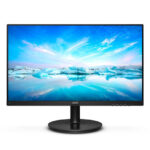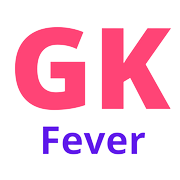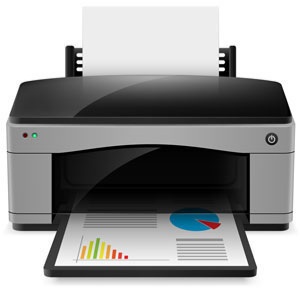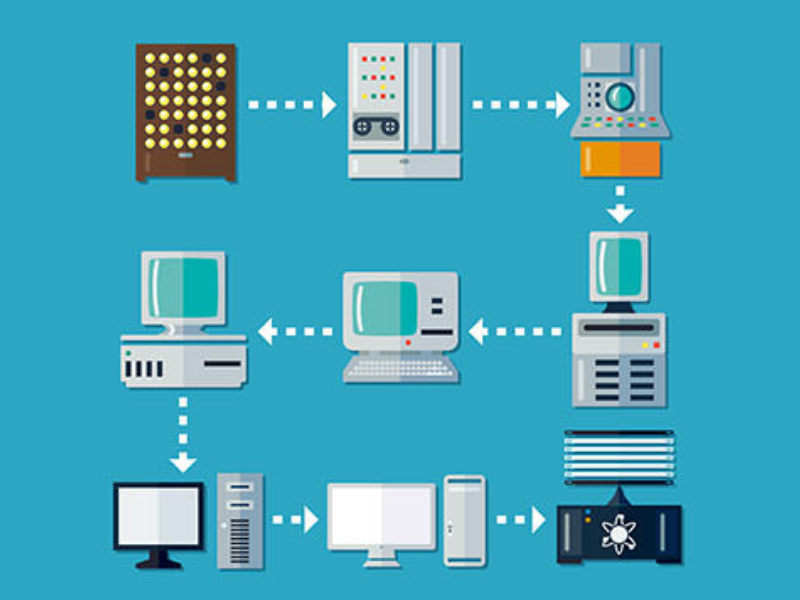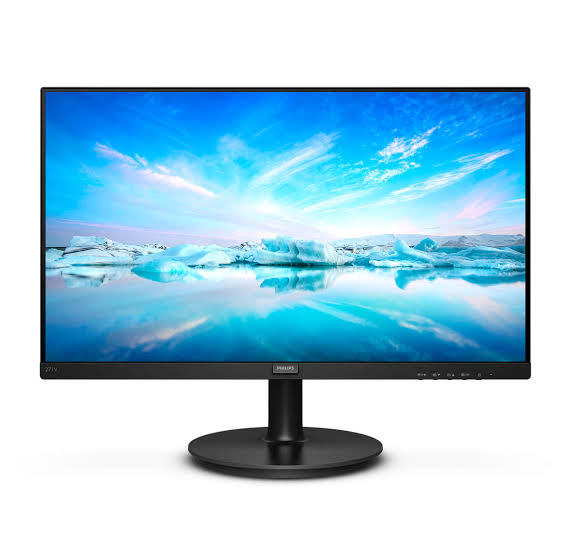Table of Contents
ToggleOUTPUT DEVICES
Output Devices are the hardware through which the computer interacts with the user. After processing of data, the computer displays the result through the output devices. The computer gives information to the user through Output Devices. The main Output Devices are given below.
- Printer
- Plotter
- Monitor
Printer
Printers may broadly be classified into two categories :-
- Impact printers
- Non-impact printers.
Impact printers
In impact printers, print head strikes an inked ribbon located between the print head and the paper. The general features of impact printers are given below –
- It uses force by applying hammer pins to strike the paper.
- It is slow in characters per second.
- Multiple copies may be printed at once.
- Main types of impact printers are Line Printer & Character Printer.
Impact printers Classified in to two type :-
- Line Printers
- Character Printers
Line Printers are of two types :-
- Drum Printers
- Chain Printers
Drum Printer
In a Drum Printer, characters are embossed on a cylindrical drum. The common drum has a set of 96 characters. The drum has 132 columns and all the 96 characters embossed on each column (around the circumference of the drum). A set of hammers, one for each column, is placed in a line.
Between the set of hammers and the drum is placed the paper for printing along with a carbon ribbon. The drum rotates at very high speed. During a full rotation of the drum, at some time or other, the character to be printed will come under the drum.
Exactly at this time the hammer strikes the drum and the character on which the hammer strikes will be printed on the paper. One full rotation of the drum will print one full line. Note that the drum rotates at high speed. Thus, it is essential that the hammer must be very accurately synchronized with the movement of the drum. Since the replica of the character on the drum is reproduced on the paper, one can not select the font. font is determined by the drum itself.
Read Also ⇒ Input Devices of Computers
Chain Printer
A line printer of chain type consists of a steel band with character embossed on it. As in drum type printer, the paper and ribbon is placed between the band and the set of hammers. The band rotates at high speed. The hammers are synchronized with the movement of the band and strike the band when the character to be printed comes under it.
Character Printer
A Character Printer prints one character after another as the print head moves across a line. Character Printers of common use are Dot Matrix Printer & Daisy-wheel Printer.
Dot Matrix Printer
Dot Matrix Printer is the most popular character printer. print head of a dot matrix printer has a rectangular array of pins. Depending upon the character to be printed, only selected pins are activated and fire against a carbon ribbon under which the paper is placed. Thus, a character printed by a dot matrix printer will consists of a number of small dots, which collectively will give the impression of a character. The quality of printing will be determined by the number of pins in the print head. A 9 pin printer (9 pins in a vertical line) is most common Capital letters are printed in matrices of 7×5. The other two pins are used to form descenders of some lower case letters like p.q etc. Dot matrix printers with 21 and 24 pins are als available. They give better print quality as compared to 9 pin print heads.
Daisy-wheel Printer
Print head of the Daisy-wheel Printer looks like a daisy flower. It has a number of print arms each with a solid character at its end. The character to be printed is stored in a buffer. The hub on which the print head is mounted rotates at high speed. As in a dot matrix hammer, a hammer strikes when the character to be printed comes under it. Under the print head is the paper below a carbon ribbon. When the hammer strikes the character on the print arm the impression of the character is reproduced on the paper.
Non-impact printers
In non-impact printers, print head does not make contact with the paper, and no inked ribbon is necessary. The general features of non-impact printers are given below.
- Print head does not make contact with the paper.
- It has higher speed.
There are 03 main types of non-impact printers are given Below :-
- Laser Jet
- Ink-jet
- Thermal Printer
Laser-jet Printer
The principle of operation of a Laser-jet printer is given below.
- The information to be printed is sent from the computer to the printer.
- The printer converts the print information into a series of “ON” and “OFF” commands corresponding to pulses of sight .
- The pulses of light are reflected to a light sensitive drum & a horizontal line is drawn on the drum. After a line is drawn on the drum, it rotates a little, positioning itself for the next horizontal line.
The drum is usually charged negatively. When a pulse of light hits the drum, it creates a dot of positive charge. Thus, the drum contains dots charged positively or negatively, depending upon the intensity of light pulses it has received The drum rotates past a container bin, which contains toner charged negatively that is attracted to the positive areas on the drums surface. Thus, the drum contains a replica of what is needed to be printed. Paper is drawn into the printer and charged positively electrically. The toner attached to the drum is transferred to the printer and is fused by application of Laser printer Photograph of a heat in a fusion chamber.
- Laser printing is used extensively for high quality, high volume and noise-less operation.
- Laser printers can print up to 40 pages/minute.
Ink Jet Printers
Ink-jet printer prints by accurately spraying droplets of a controlled stream of ink on the paper. Ink is stored in a container known as the cartridge. There are many ways in which the ink may be forced out of cartridge for printing. One simple technique is thermal heating. In this method, ink is heated till it is vaporized. This forces the ink to come out of the cartridge The print head of a popular model of Hewlett-Packard Ink-jet printer has twelve tiny holes arranged vertically facing the paper. As the print head moves horizontally, the droplets of Inkjet are shot wherever required. Behind each hole is a small heating element which, when turned on, vaporizes the ink rapidly causing a force inside the ink cartridge. As a result, the ink is ejected from the cartridge Another type of printer head is based on the principle that when current is passed through a piezoelectric crystal, it expands.
- The expansion of the piezoelectric crystal is utilized.
- To build pressure in the cartridge and force ink out of it.
- Ink-jet printers are inexpensive and produce less noise.
- Inexpensive ink-jet printers are also available for printing coloured images .
Thermal Printers
head of the Thermal Printer, like that of the dot matrix printer, has a number of pins. A selected set of pins may be activated to print a given character. Unlike the dot matrix printer, there is no impact force of the hammer over the character to be printed. Here the actuated pin heats the paper. The paper is heat sensitive and as a result the impression of the character formed by the activated pins is transmitted to the heat sensitive paper.
Plotter
Plotters are device to produce graphic output. For example, plotters are used for printing of graphics images like road maps, engineering architectural and other type of drawings
Plotters are of two types :-
- flat bed plotters
- Drum type plotters.
The plotter has a pen to draw lines on the paper. In a flat bed plotter the motions of the pen in both X and Y directions are controlled by the computer. In a drum-type plotter, paper is mounted on a drum. The drum can rotate in either direction.
Monitor
The monitor of a PC is known as the video display unit. It is also Output Devices. It comprises a cathode that emits electrons when heated. The stream of electrons emitted is accelerated and focused into a point on the display screen. The display screen contains a phosphor-coated surface which gets illuminated when a speeding electron strikes on it. This shows an illuminated point on the screen.
The beam of electrons is controlled by deflection plates for displaying the point on any location on the screen. The colour monitor has three electron guns, each corresponding to a primary colour. Three dots, one each in basic colours (namely, red, blue and green) are placed one over the other. The colour of the pixel will be determined by the intensity of each colour. For example, combination of red and green colours will produce a yellow dot on the screen. However, the phosphor glow created is short lived. That is why some means has to be devised for overcoming this shortcoming.
Parts of CRT :-
- High Positive Voltage (Anode)
- Control Grid
- Heating Element
- Phosphor Coating
- Cathode Focus
- Control Deflection
- Yoke
- Control Grid
- Electron Beam
A portion of the Random Access Memory (RAM) is known as the video memory.) Any data stored in the Video RAM is displayed on the screen. Since the display is only short-lived, the process has to be repeated at very short intervals of time. This is known as refreshing an image. The number of times the screen image is refreshed in a second is known as refresh rate. For clear and steady image, the refresh rate should be around 60.
The Screen image may be refreshed in the following ways :-
- Stroke Writing
- Raster Scan
In Stroke Writing
Images are generated on the screen by direct drawing of vectors on the screen. The image is continuously refreshed by repeated stroke writing at a rate fast enough to display a steady image (about 60 times in a second).
In Raster Scan
Complete screen is divided into a matrix of pixels which may be (640 x 480) or (1280 x 1024) depending Raster Scan upon the resolution of monitor. It is required to identify the attribute of each pixel. The attribute of a pixel is defined by its colour and intensity. Then the entire screen is refreshed line by line from top to bottom. Quality in Raster Scan is inferior as compared to Stroke Writing However, the technology is inexpensive.
Cathode Ray Tube (CRT)
Cathode Ray Tube (CRT) is rather heavy and bulky device that can work as desktop devices. It is also Output Devices. Now-a-days many executives use portable lap-top computers which can be carried as a brief case. These systems are provided with Liquid Crystal Display (LCD) screens. In this system, a special type of liquid is sandwiched between two plates. The top plate is transpare arrangement of the molecules in the liquid either allows passage of a ray of light or blocks it. Thus, the screen display is determined by the manner in which the molecules in the liquid are aligned. The calculator and some digital watches use this technology for displaying output.



